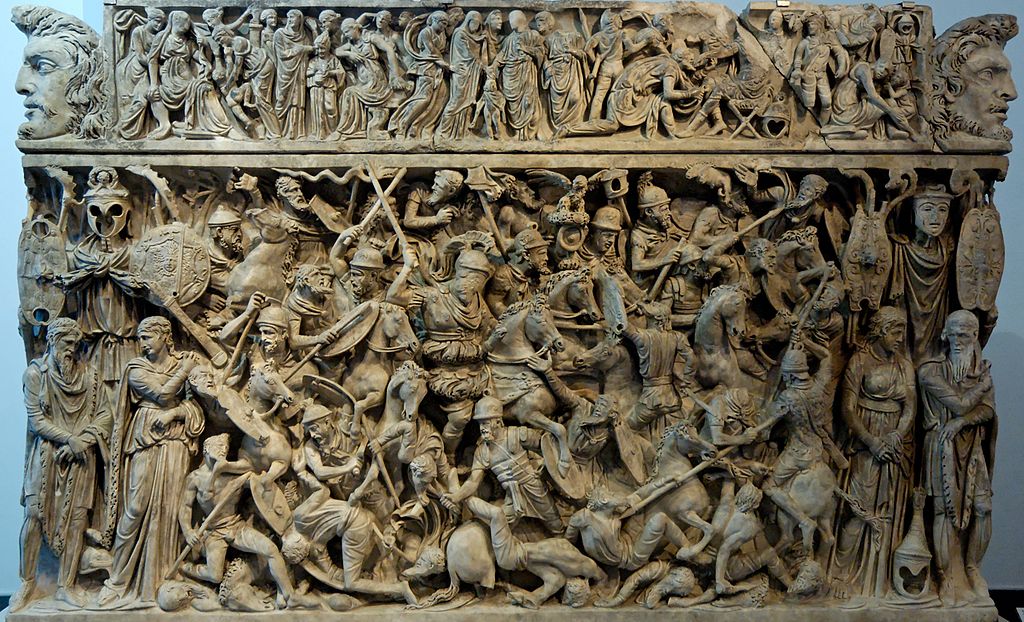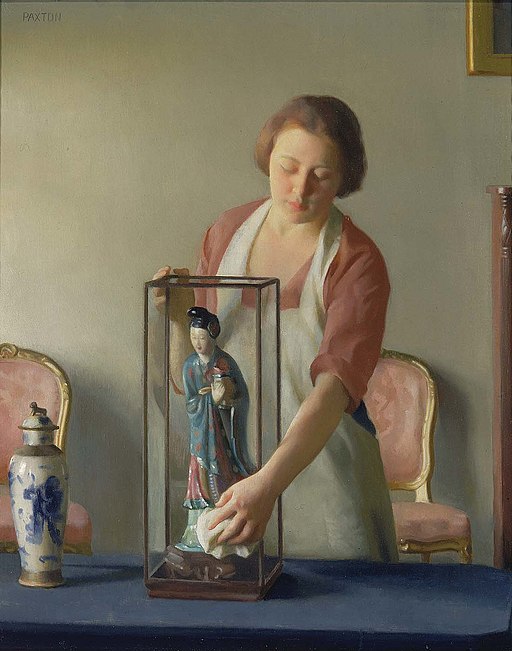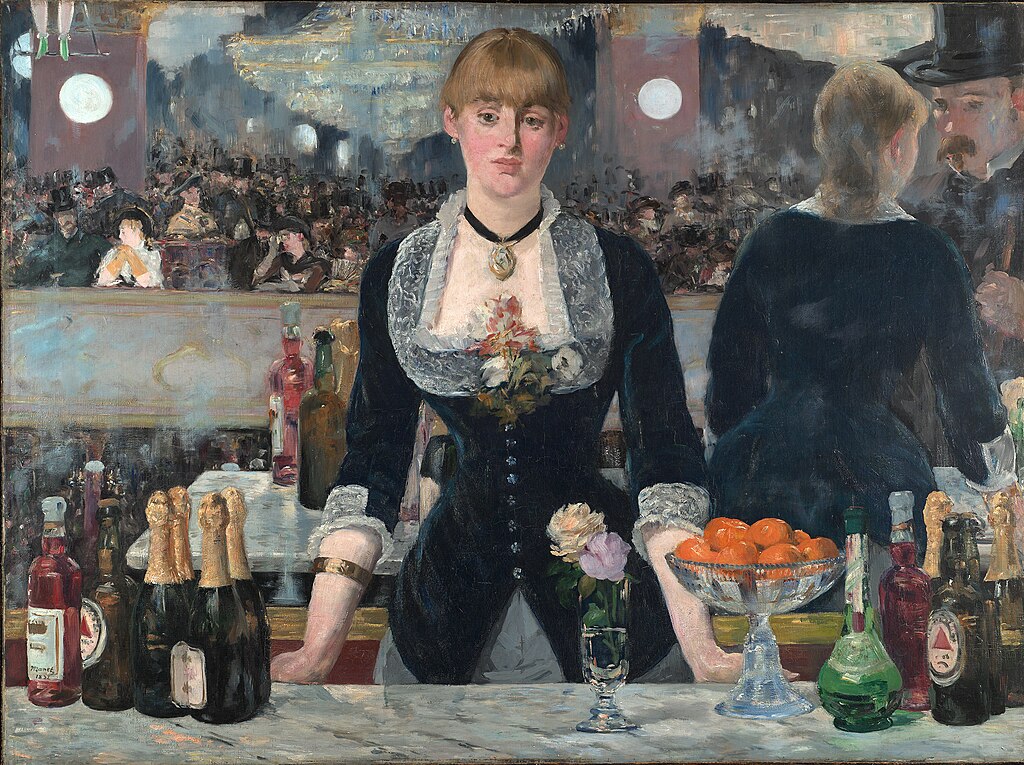
Innocence by Lovis Corinth depicts a young girl stripped to the waist in frontal view, crossing his arms over her chest with her hands partially covering her breasts.
A white and olive green garment covers her belly below the arms. Her right nipple is visible between the middle and index fingers of the left hand.
Her head is on a slight slant, and she wears a violet scarf, which hangs behind her right shoulder as a veil, forming the background to her body.
She looks melancholy and absent-mindedly dreamy. The canvas is marked in the upper left corner with the title of “Innocentia” and signed in the top right corner with Lovis Corinth.
Art historians have debated and interpreted the hands as representing an emerging self-perception of womanhood or a gesture of humility, which is indicative of the innocence as suggested by the title.
There is a contradiction in the presentation by the deliberately displayed nipple. The painting is both reminiscent of depictions of courtesans, while at the same time, the veil conveys more religious overtones. Little is known about the inspiration for this picture.
During the Third Reich, Corinth’s work was condemned by the Nazis as degenerate art.
In 1937, Nazi authorities removed 295 of his works from public collections and transported seven of them to Munich, where they were displayed in March 1937 in the Degenerate Art Exhibition.
Degenerate Art
Degenerate Art was a term adopted in the 1920s by the Nazi Party in Germany to describe modern art. Under Adolf Hitler’s leadership, modernist art was removed from museums and banned in Nazi Germany because such art was an un-German, Jewish, or Communist.
Artists labeled as degenerate artists were subjected to being dismissed from teaching positions, were forbidden to show or to sell their art and were forbidden to produce art.
The Nazis promoted paintings and sculptures that were traditional, and that exalted the values of racial purity, militarism, and obedience.
Degenerate Art Exhibition
The Nazis held the Degenerate Art Exhibition in Munich in 1937, which displayed 650 modernist artworks. The art was deliberately hung chaotically and disparagingly, with accompanying labels that deriding the art.
The exhibition was designed to inflame public opinion against modernism; the show subsequently traveled to several other cities in Germany and Austria.
After the show, the paintings were mainly sold in Switzerland at auction to raise funds for Nazi causes. Museums acquired some pieces; private collectors purchased others.
Ironically, high-ranking Nazi officials took many for their private use. Hermann Göring took 14 valuable pieces, including a Van Gogh and a Cézanne.
In 1939, the Berlin Fire Brigade burned about 4000 paintings, drawings, and prints that had little value on the international market. This destruction of thousands of artworks was an act of unprecedented Art vandalism.
Lovis Corinth
Lovis Corinth (1858 – 1925) was a German artist whose work achieved a synthesis of impressionism and expressionism. Corinth studied in Paris and Munich and joined the Berlin Secession group.
Corinth was initially antagonistic towards the expressionist movement. However, after a stroke in 1911, his style loosened and took on many expressionistic qualities.
Corinth’s use of color became more vibrant, and his art gained increased vitality and power.
Innocence
- Title: Innocence
- Artist: Lovis Corinth
- Year: 1890
- Material: Oil on canvas
- Dimensions: 66,5 cm; 54,5 cm
- Museum: Lenbachhaus
Lovis Corinth
- Name: Lovis Corinth
- Born: 1858 – Tapiau, Prussia
- Died: 1925 – Zandvoort, Netherlands
- Nationality: German
- Notable works:
- Self-portrait with Model
- Innocence
- Portraits by Lovis Corinth
- Portrait of a Woman with Hat
- Portrait of the painter Karl Strathmann
- Portrait of father Franz Heinrich Corinth with Wineglass
- Self-portrait with Skeleton
Lovis Corinth: A collection of paintings
A Tour of Germany’s MuseumsBerlin Museums
- The Pergamon Museum
- Neues Museum
- Altes Museum
- Alte Nationalgalerie – National Gallery (Berlin)
- Bode Museum
- Gemäldegalerie, Berlin
- Spy Museum Berlin
- Jewish Museum, Berlin
- Deutsches Historisches Museum – German Historical Museum
- DDR Museum
- German Resistance Memorial Center
Munich Museums
- Art Galleries
- Alte Pinakothek
- Neue Pinakothek
- Pinakothek der Moderne
- Lenbachhaus
- Museum Brandhorst
- Greek and Roman Art
- Glyptothek
- Staatliche Antikensammlungen
- Egyptian Art
- Staatliche Sammlung für Ägyptische Kunst
- Kunsthalle Munich
- Deutsches Museum – German Museum of Masterpieces of Science and Technology
~~~
“A painting requires a little mystery, some vagueness, and some fantasy. When you always make your meaning perfectly plain you end up boring people.”
– Edgar Degas
~~~
Photo Credit: Lovis Corinth [Public domain]
Popular this Week








 Sponsor your Favorite Page
Sponsor your Favorite Page SEARCH Search for: Search Follow UsJoin – The JOM Membership Program
Sponsor a Masterpiece with YOUR NAME CHOICE for $5
Share this:
- Tweet
